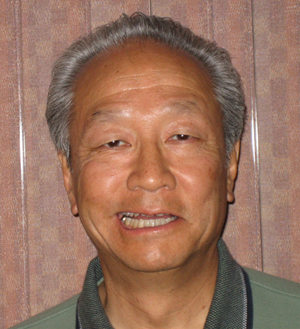TMJ problems evolved or gained popularity and, therefore, importance in the middle 1980’s. It was the hot topic at dental conventions and CE courses. Heated arguments ensued over which splint was correct. The only agreement was that it would be an expensive splint.
In 1988 I wrote an article for the Orange County Dental Society called “After the Splint.” Many treatment modalities were aimed at healing the TMJ itself or treating painful jaw muscles. But TMJ issues had been discussed years earlier by some of the pioneers of modern dentistry.
Sometime in the 1950’s, Charles E. Stuart, DDS said, “The mandible in tooth contact with the cranium, should be a suspension and not a lever. When it becomes a lever (through malocclusion), the fulcrum induced strains the jaw joint (TMJ), the periodontium, and wears the teeth. This was an accurate and concise statement by a true genius.
How many years has it taken to for our modern dental researchers to admit that malocclusion is an etiological factor in TMJ and periodontal disease? And some misguided researchers are still in denial. Today, the more correct name, TMD, is used because we are aware of the role that muscles play in the etiology, diagnosis and treatment of pain in the head and neck.
Today, practitioners agree that treatment of TMD can often include a multidisciplinary approach. Physical therapists, orthodontists, oral surgeons and chiropractors all have been involved in a phase of TMD therapy. The invention of the Cone Beam CT Scan for TMJ is a wonderful help in TMJ imaging for diagnosis and treatment planning. The question in most minds is, “When to do what to which part?”
TMD treatment is one of the more difficult challenges in dentistry. The literature is full of contradictory articles by learned and sincere dentists from all over the world. Reading alone cannot give a dentist the skills necessary to treat TMD. We need 3 dimensional visualization, education, and expertise. The key is to make Centric Occlusion = Centric Relation.
We need tactile skills developed by working on mounted models, then doing correction in the patient’s mouth. Pure researchers who have limited knowledge of occlusal concepts have no appreciation of the importance of the needed skills because written articles and statistics are only two dimensional.
As general dentists, we are the primary contact for many TMD patients. A thorough knowledge of occlusion is essential for the diagnosis and treatment of TMD patients. Expertise in occlusal concepts is important to prevent the occurrence or recurrence of TMD. Occlusion is the variable that is under the dentists’ control. It is the cloth that weaves all of the parts of the puzzle together.
For example, how do we know if some new crowns have the correct occlusion? Or how do we know if the occlusion created by orthodontic treatment is off centric, or an auto accident case has a malocclusion? None of these cases will heal if the occlusion is out of harmony with the TMJ and the muscles of mastication. If we don’t mount the models and do an Occlusal Analysis, how could we know if malocclusion is present?
I make movies of the mounted models to show patients how their malocclusion is making the TMJ displace. Dr. Henry Gremillion of LSU and Dr. Jeffrey Okeson of the University of Kentucky are internationally known TMD experts who agree that malocclusion can be a factor in TMD cases.
It is important to know about other etiological factors of TMD, such as back injuries, scoliosis, arthritis, sleep position and habits, nail chewing, night grinding, and stressful clenching day and night. It is also important to know when a patient is NOT suffering from TMJ or TMD. There is a condition called “Trigeminal Neuralgia” that can sometimes mimic TMD. Neck or spinal issues can sometimes cause a temporary change in a patient’s occlusion, and after Chiropractic treatment and/or physical therapy, the painful symptoms stop.
Different forms of arthritis can cause an anterior open bite with a resulting tongue thrust. I have successfully treated many arthritic patients. Rheumatoid arthritis patients require occlusal stability and systemic medications from a Rheumatologist. Some systemic diseases such as lupus and Lyme disease can cause major damage to the TMJ as well as other joints in the body. These two conditions require multidisciplinary treatment, quite often in a university setting.
I have studied occlusion with the Stuart Gnathological Study Group since 1972, and am able to correct most occlusal problems and recognize when a malocclusion needs orthodontic treatment or ortho-gnathic surgery. My first TMJ courses were with Dr. Terry Tanaka, an international TMJ expert, who taught me to look at the whole body. Since then many other studies have contributed to my TMD knowledge. I took a 3 day course with Dr. Henry Gremillion at the University of Florida at Gainesville.
For the last 8 years, I have gone to the American Equilibration Society for a yearly meeting of over 300 TMD practitioners. At these meetings, I have presented 7 different TMD cases. I dedicate ½ of my dental practice to TMD patients.
It is important to maintain a general dentistry practice because many TMD patients require restorative dentistry to stabilize their occlusion as part of their TMD treatment.
More TMJ Information:
- Anterior Open Bite Thumbsucking
- Causes Of TMJ
- Open Bite
- Temporomandibular Joint Disorder
- Tinnitus From TMJ
- TMD
- TMJ Cure
- TMJ Dentist
- TMJ Excercises
- TMJ Jaw
- TMJ Ligaments In Males
- TMJ Pain
- TMJ Relief
- TMJ Specialist
- TMJ Surgery
- TMJ Symptoms
- TMJ Syndrome
- TMJ Therapy
- TMJ Treatment
- TMJ Vs Malocclusion
- Tongue Thrust Dentist
- What is “Occlusal Analysis”?
- The Evolution of Temporomandibular Joint Disorders (TMD, TMJ)
